School Programs
We offer standards-based, developmentally-appropriate programs for pre-school through 12th grade students year round. These programs utilize our new state-of-the-art full-dome projection system and are visually stimulating, informative, and entertaining. They are a radical departure from the old fashioned analog planetariums of the past. If you don’t see a program that meets your needs, let us know. We can usually create a customized program just for you and your students at no additional charge.
Please contact Heidi Westrick at heidi.kuchta@utoledo.edu, or 419.530.4641 if you have any questions regarding which program might be best for your students, or if you have questions regarding the Ohio or Michigan Science Standards.
What you can expect
The feature presentation typically run about 25 minutes, and is followed by a live, interactive tour of the night sky and a discussion of current astronomical events all catered to your students’ particular grade level and interests. This is followed by a question and answer session. In total, a typical visit lasts about an hour, not counting time to look at many displays in the lobby.
Double Features
You may pair any two programs including full-dome, classic, or the Journey package together to create a double feature for a very modest additional charge. Most double features last about an hour and a half and include an intermission at your discretion.
Fees
Admission to the planetarium is $6 per student for a single feature and $8 for a double feature. Admission to the planetarium for accompanying teachers is free. One chaperone for every 5 kids is admitted free for pre-school and kindergarden groups, and one chaperone for every 10 kids is admitted free for grades 1-12. The admission fee additional chaperones is $6 for a single feature and $8 for a double feature. We do have a minimum fee of $120 for a single feature and $160 for a double feature for groups of 20 or fewer.
Scheduling Your Trip
Reservations are required for all field trips. Please call 419.530.2650 to make your
reservations at least three weeks in advance. For more information on the programs
we offer, including possible tours of the observatory or evening observing sessions,
please call Heidi Kuchta at 419.530.4641 or email at heidi.kuchta@utoledo.edu.
Full-Dome Programs
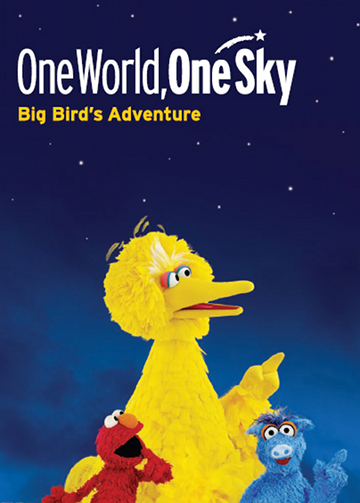
One World, One Sky, Big Bird's Adventure
(Pre-school through 1st grade)This is the perfect age-appropriate introduction to the night sky for children ages three and half to six. One World, One Sky, Big Bird’s Adventure is a full-dome show that follows Sesame Street's Big Bird and Elmo as they explore the night sky with Hu Hu Zhu, a Muppet from China. Together they take an imaginary trip from Sesame Street to the Moon, where they discover how different it is from Earth. One World, One Sky, Big Bird’s Adventure aims to nurture a child's natural sense of wonder about the night sky while connecting kids across nations through a common bond in learning about the sky.
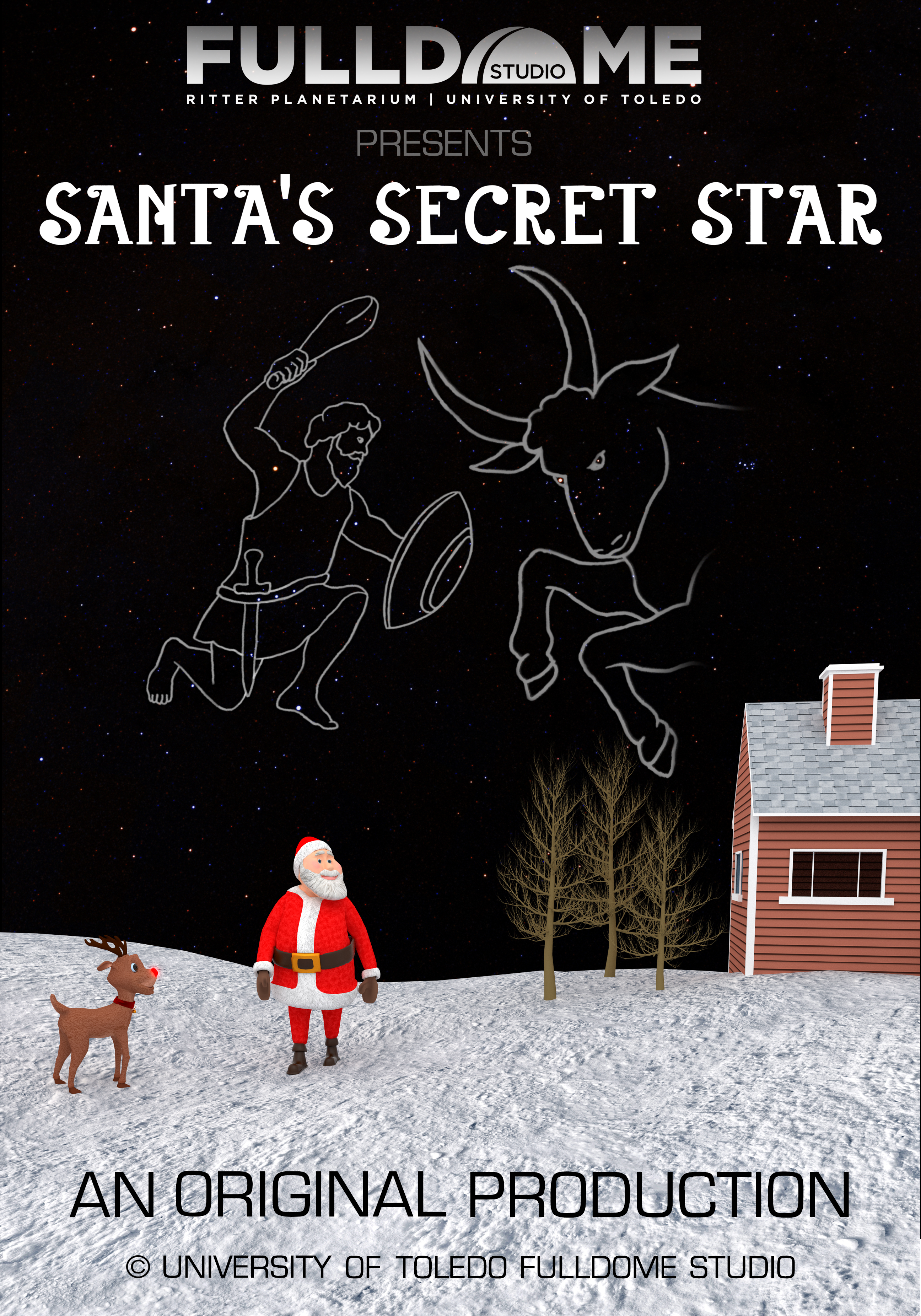
Santa's Secret Star
(Pre-School through 2nd grade)
Santa’s Secret Star is an updated full-dome version of our classic children’s program by the same name. Follow along as Rudolph introduces Santa to his friends the constellations. Watch how the constellations help Santa and his crew make it back to the North Pole. Learn how you can navigate by the stars just like Santa.
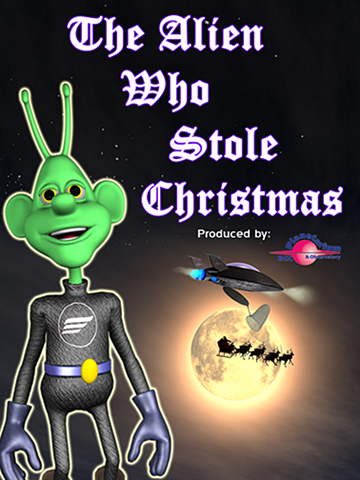
The Alien Who Stole Christmas
(K through 4th grade)
Take a brisk walk on clear winter evening and look at the stars and constellations overhead without ever leaving your comfortable seat in the planetarium. Then tag along with Santa as he meets Mr. Freep, an alien from another world. Together they head of on a cosmic adventure taking them to the farthest regions of our Solar System. Will Santa make it back in time to deliver his toys to the children of Earth? Join for us this holiday season for The Alien Who Stole Christmas, an amusing, entertaining, and educational program for children aged four to ten and Santa fans of all ages.
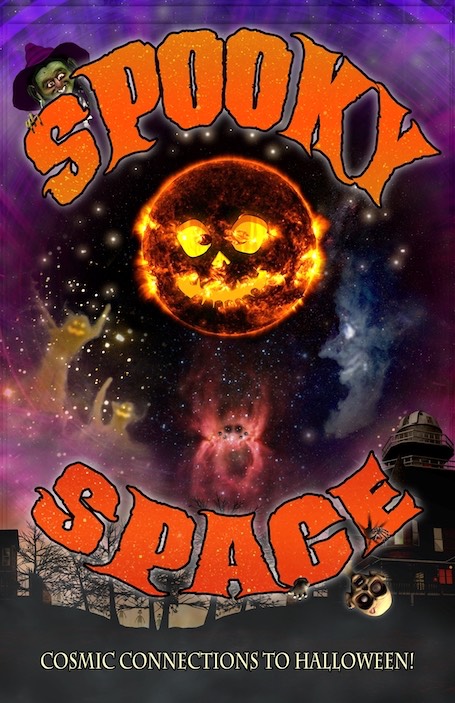
Spooky Space
(1st through 5th grade)
Explore the sky and outer space with a Halloween twist. Meet the space counterparts to spooky characters like ghosts, vampires, and witches. Spooky Space is a great Halloween show to teach 1st-5th grade students about a variety of celestial objects.
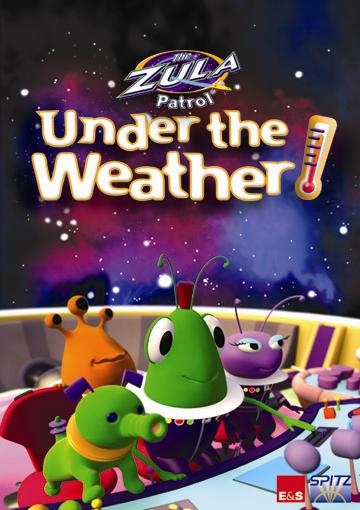
Zula Patrol: Under the Weather
(Available in Spanish)(2nd through 4th grade)
Explore the solar system with the Zula Patrol! Learn all about weather, both here on Earth and on other planets as well. Your students will experience a dust storm on Mars, a hurricane on Jupiter, and the incredible heat on Venus.
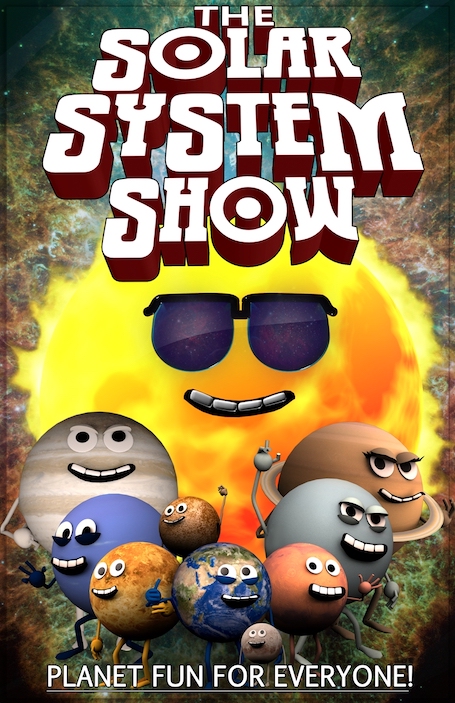
The Solar System Show
(2nd through 6th grade)
Looking to explore way-out worlds? Then join our kid crew reporters and rambunctious planets for The Solar System Show! The Solar System Show is hosted by kids who do all the science reporting and narration. The program includes a toilet paper solar system and the cow that landed on the Moon. The Solar System Show is a good program to teach 2nd-6th grade students about the planets and the scale of the solar system.
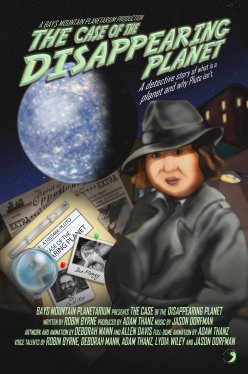
The Case of the Disappearing Planet
(3rd through 7th grade)
A radio announcement… an excited phone call… and our sly gumshoe, Skye Watcher, is on the case. Explore with Skye and discover what happened to the ex-planet Pluto as she tracks down clues that stretch back hundreds of years! Audiences will have great fun with this unique program that looks into the changing status of planets in our Solar System.
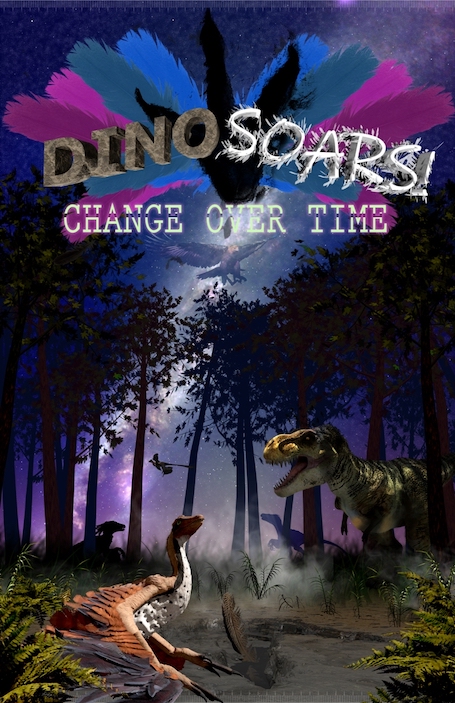
Dino Soars! Change over time
(4th through 8th grade)
Perhaps the most astounding discovery about dinosaurs is that they are still around today – and not just in the movies. Birds are living dinosaurs! Follow the story of Malkia, a museum paleontologist, as she explores fascinating connections between birds and dinosaurs.
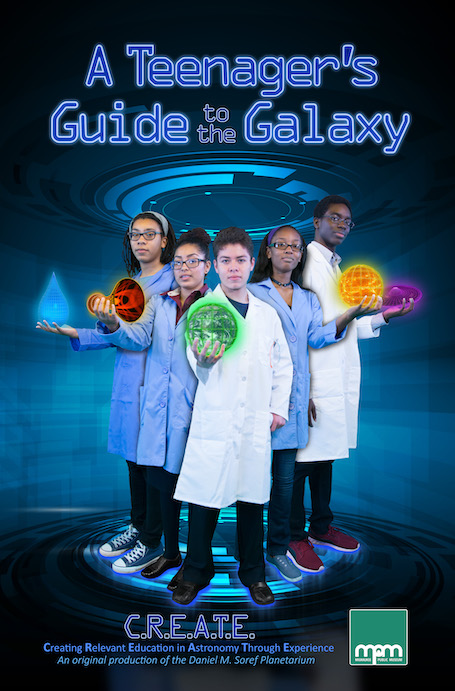
A Teenager's Guide to the Galaxy
(4th through 8th grade)
Created and hosted by cosmically curious teenagers from urban Milwaukee schools, this unique cosmic experience will take you on a dynamic journey across the Universe and through time. Explore the origins and fate of the Universe, black holes and our Sun. Witness stunning full dome animations video scripted, story boarded and narrated by these inspiring young adults. A teenager’s Guide to the Galaxy is a good program to teach 6th-12th grade students an overview of astronomy topics.
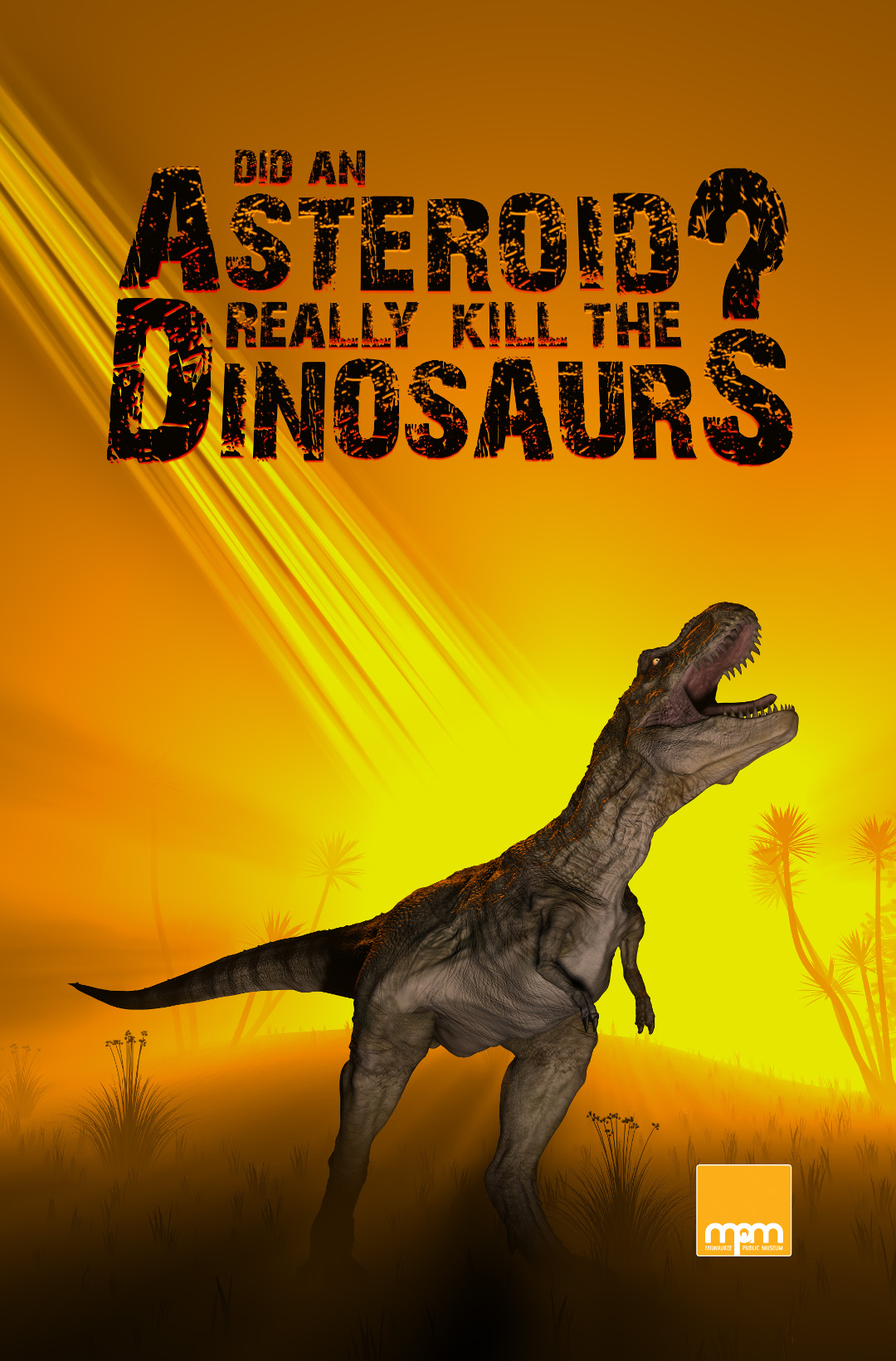
Did an Asteroid Really Kill the Dinosaurs
(4th through 8th grade)
Astronomy and Dinosaurs, what else could anyone want? This program that examines the mystery of the great extinction some 65 million years ago. Travel with us as geologists roam the earth in search of clues that ultimately lead scientist to the massive impact from space in the Yucatan Peninsula that killed the dinosaurs. This is an exciting and entertaining program that answers the question, “Did an Asteroid Really Kill the Dinosaurs?
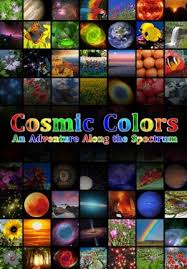
Cosmic ColorS
(5th through 9th grade)
Why is the sky blue? Why are plants green? Learn all about color and how our eyes work. Then go beyond the visible spectrum and learn about the rest of the electro-magnetic spectrum including radio waves, infrared, ultraviolet, X-rays and gamma rays. This program meets many Ohio and Michigan Science Standards.

Cosmic Recipe
(5th through 9th grade)
This program is a fun and exciting tour of the periodic table of elements and looks at what the elements are and how they were made. This is the perfect program to bridge chemistry, physics, and astronomy while meeting many of the Ohio, and Michigan Science Standards.
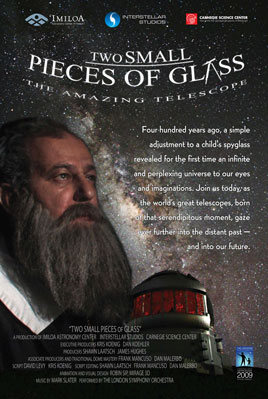
Two Small Pieces of Glass
(5th through 9th grade)
Two Small Pieces of Glass traces the history of the telescope from Galileo's modifications to a child's spyglass—using two small pieces of glass—to the launch of NASA's Hubble Space Telescope and the future of astronomy. It explores the wonder and discovery made by astronomers throughout the last 400 years. The students explore the Galilean Moons, Saturn's rings, and spiral structure of galaxies as well as learning about the future of astronomy.
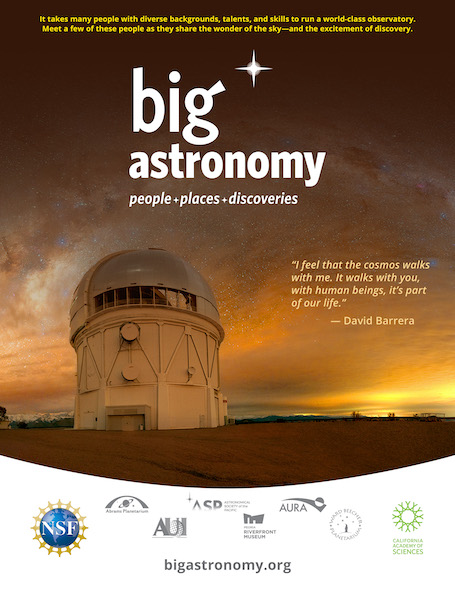
Big Astronomy
(5th through 12th grade)
Journey to three world-class observatories in Chile’s rugged Andes Mountains and arid Atacama Desert— remote, extreme regions that happen to have the perfect conditions for astronomical research. Along the way, you’ll meet an inspiring set of astronomers, engineers, technicians, and support staff who keep these large observatories running.
Big Astronomy is a multifaceted research and outreach project supported by several partners and funded by the National Science Foundation. It also hosts live educational events online and offers a variety of hands-on activities now adapted for remote learning. To continue the learning, engage in ongoing conversations with observatory staff, and explore educational activities visit bigastronomy.org.
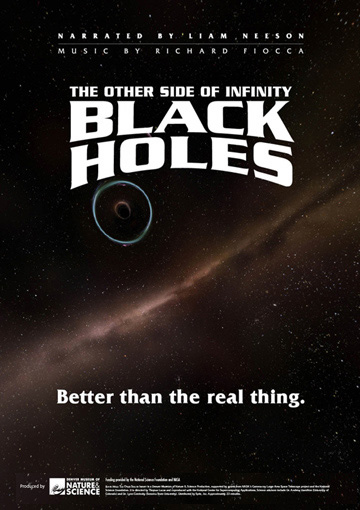
Black Holes, the Other Side of Infinity
(Available in Spanish)(5th through 12th grade)
Narrated by Academy-Award nominated actor Liam Neeson, this cutting-edge production features high-resolution visualizations of cosmic phenomena, working with data generated by computer simulations, to bring the current science of black holes to the dome screen.
Your students will enjoy the striking, immersive animations of the formation of the early universe, star birth and death, the collision of giant galaxies, and a simulated flight to a super- massive black hole lurking at the center of our own Milky Way Galaxy.
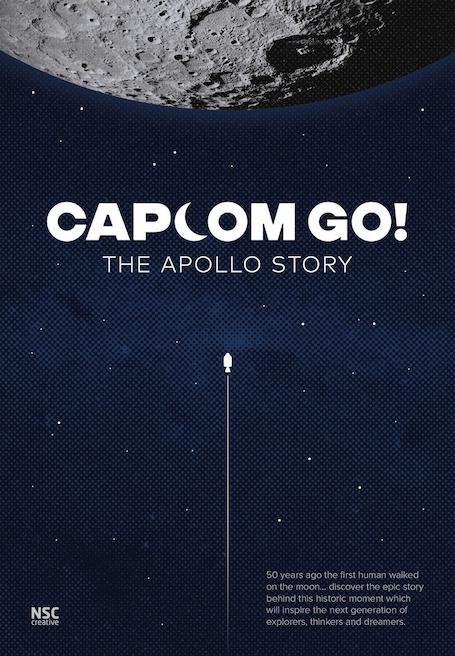
CapCom Go! The Apollo Story
(5th through 12th grade)
An immersive, historical documentary that showcases the achievements of the Apollo program and what it took to put the first human on the Moon. It introduces a new generation to the immense challenges they overcame and will inspire them to become the explorers, designers, engineers, thinkers and dreamers of the future.
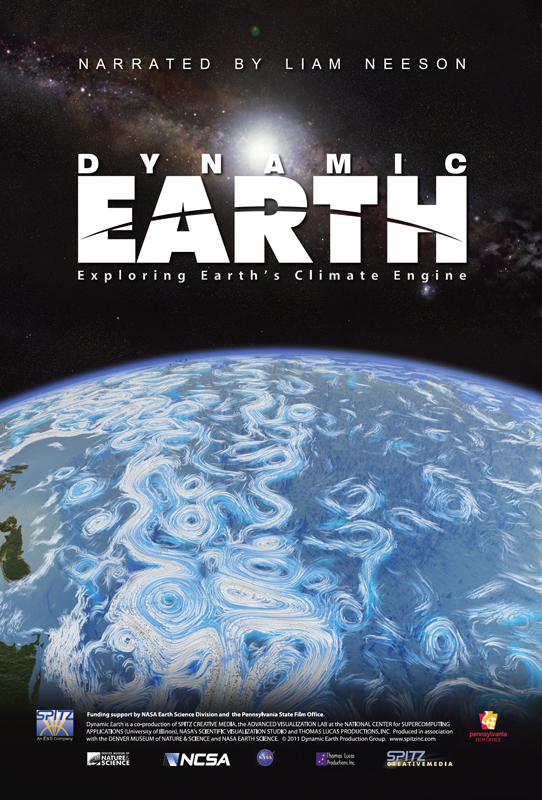
The Dynamic Earth
(Available in Spanish)(5th through 12th grade)
This thrilling program examines the Earth’s climate engine, the Carbon Cycle. Your students will travel from far-flung Venus to beneath the Earth’s seas to understand why the Earth is capable of supporting life, and how that life, from plankton to people, interacts with that very same Carbon Cycle. This is the perfect program for astronomy, earth science, and biology classes!
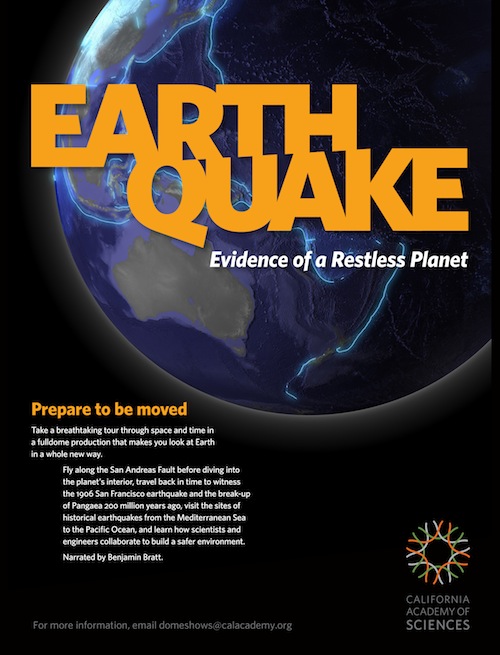
Earthquake: Evidence of a Restless Planet
(5th through 12th grade)
A sweeping geological journey, Earthquake: Evidence of a Restless Planet explores the forces that transform the surface of our planet. Fly along the San Andreas Fault before diving into the planet’s interior. Journey back in time to witness the 1906 San Francisco earthquake, and the break-up of Pangaea 200 million years ago. Learn how scientist and engineers collaborate to help society prepare for a safer environment and a safer future.
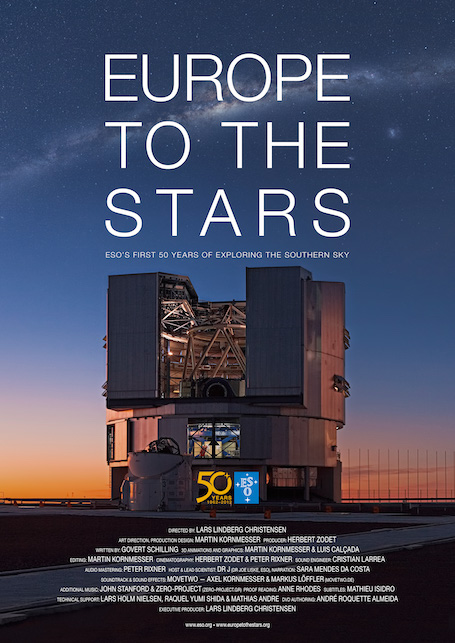
Europe to the Stars
(5th through 12th grade)
Discover the European Southern Observatory in a story of cosmic curiosity, courage and perseverance; a story of observing a Universe of deep mysteries and hidden secrets; and a story of designing, building and operating the most powerful ground-based telescopes on the planet. The program focuses on the essential aspects of an astronomical observatory while offering a broader view of how astronomy is done. From site-testing to locate the best places in the world for observing the sky, to how telescopes are built and what mysteries of the Universe astronomers are revealing. Europe to the Stars is a good program to teach 9th-12th grade students about the tools used in astronomy.
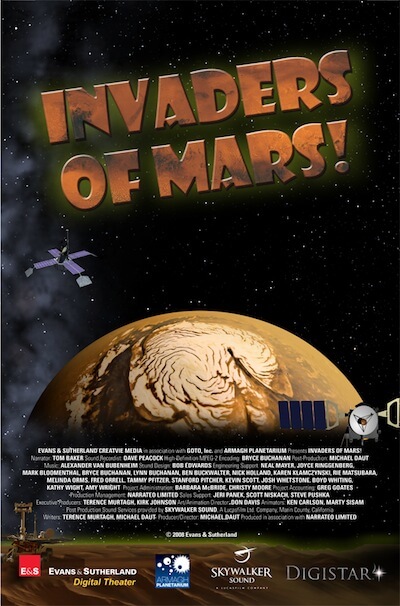
Invaders of Mars!
(5th through 12th grade)
Invaders of Mars! highlights our ongoing exploration of Mars. We explore the Martian surface as seen by Earth’s various spacecraft “invaders” and use the data gathered to explore the red planet as only CGI can. We emerge with a new perspective on the red planet Mars.
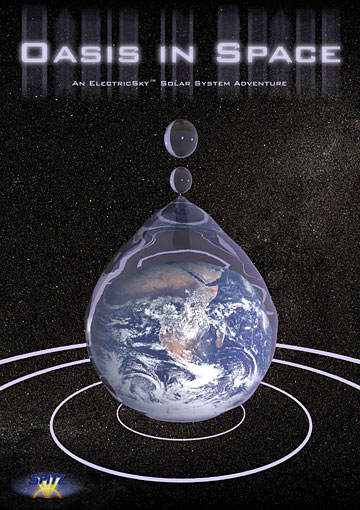
Oasis in Space
(5th through 12th grade)
During this visual stunning program your students will travel through the solar system in search of liquid water, life, and another oasis in space like our Earth. The program looks at the formation of the solar system, and the physical characteristics of the planets, and some of their larger moons.
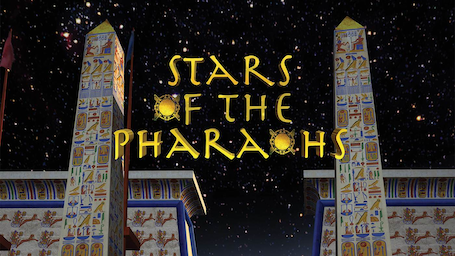
Stars of the Pharoahs
(5th through 12th grade)
Travel to ancient Egypt to see how science was used to tell time, make a workable calendar, and align huge buildings. You’ll learn about the connection the ancient Egyptians felt with the stars and various astronomical phenomena, and experience some of the most spectacular temples and tombs of the ancient world recreated in all of their original splendor.
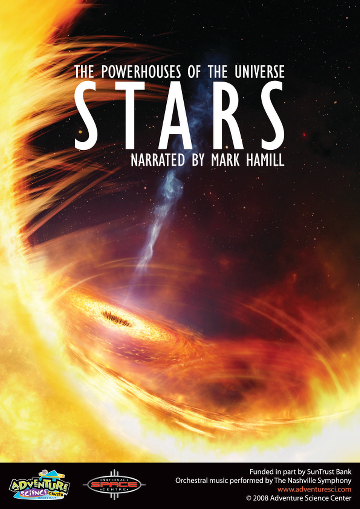
Stars: The Powerhouses of the Universe
(5th through 12th grade)
Stars focuses on how stars are born, how they die, and how human understanding of them has changed over time. From Native Americans to Newton, from the electromagnetic spectrum to Einstein, audiences will explore nebulae, star clusters, pulsars, black holes, and more.
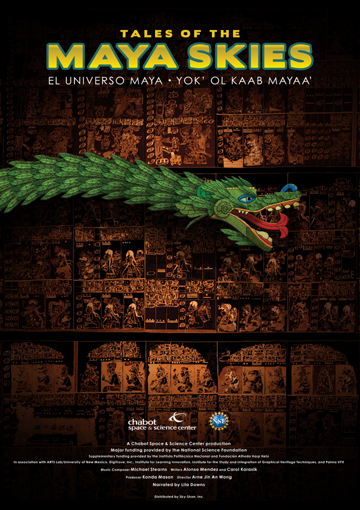
Tales of the Maya Skies
(Available in Spanish)(5th through 12th grade)
Tales of the Maya Skies is a digital full-dome show with a custom score and visuals that immerses the audience in Mayan astronomy, art, and culture. Narrated by Latin Grammy award winner Lila Downs, Tales of the Maya Skies inspires and educates through its description of the Maya's accurate astronomical achievements and how astronomy connected them to the Universe.
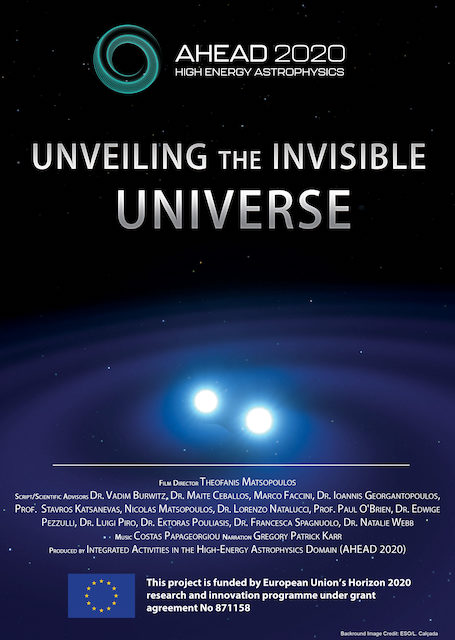
Unveling the Invisible Universe
(5th through 12th grade)
For thousands of years the humans observed the light coming from the night sky with their eyes. In the beginning of the 17th century, the invention of the telescope by Galileo revolutionized our knowledge of the Universe. In the 20th century with the advent of rockets, it became possible to go above the Earth’s atmosphere and observe X-ray and gamma ray radiation which are the marks of the hot and violent Universe. But it is not only light that can give us information about the cosmos. Neutrinos and cosmic rays also provide vital information. Finally, the detection by the LIGO experiment of gravitational waves from two merging black holes opened a new window in astrophysics.
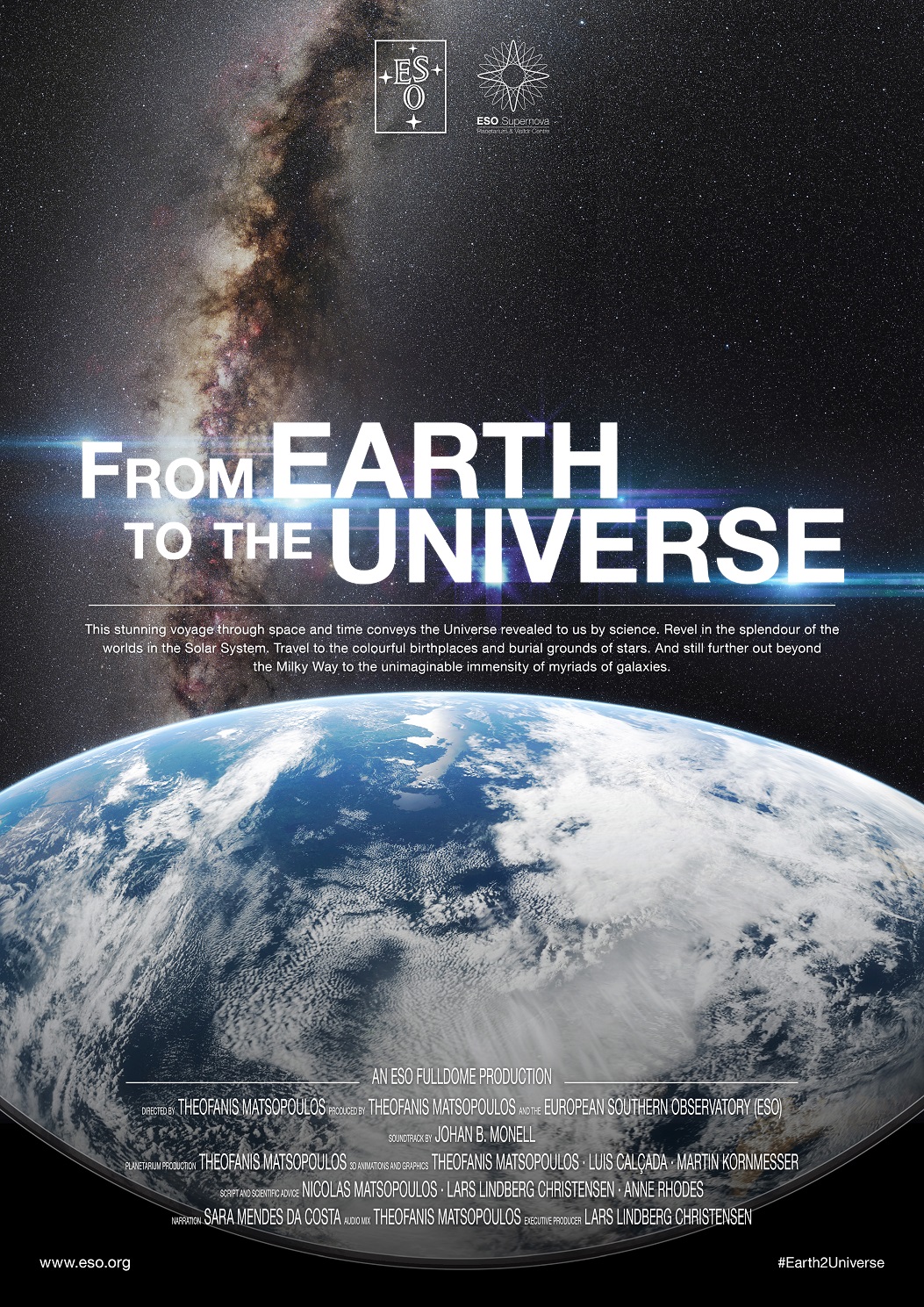
From Earth to the Universe
(7th through 12th grade)
This stunning voyage through space and time conveys, through sparkling sights and sounds, the Universe revealed to us by science. Viewers can revel in the splendor of the worlds in the Solar System and our scorching Sun. From Earth to the Universe takes the audience out to the colorful birthplaces and burial grounds of stars, and still further out beyond the Milky Way to the unimaginable immensity of a myriad galaxies. Along the way, the audience will learn about the history of astronomy, the invention of the telescope, and today’s giant telescopes that allow us to probe ever deeper into the Universe.
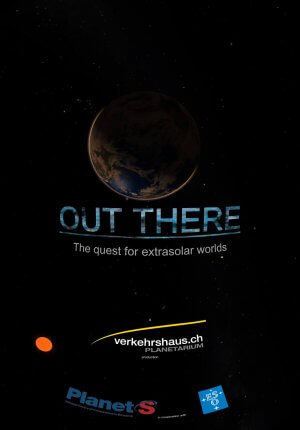
Out There, the Quest for Extra-Solar Worlds
(7th through 12th grade)
In the last twenty-five years astronomers have discovered thousands of new planets orbiting other stars in our Milky Way. Learn the techniques they use to find these hidden worlds from both space-based and earth-based observatories. Find out the diverse mix of planets, “Out There”.
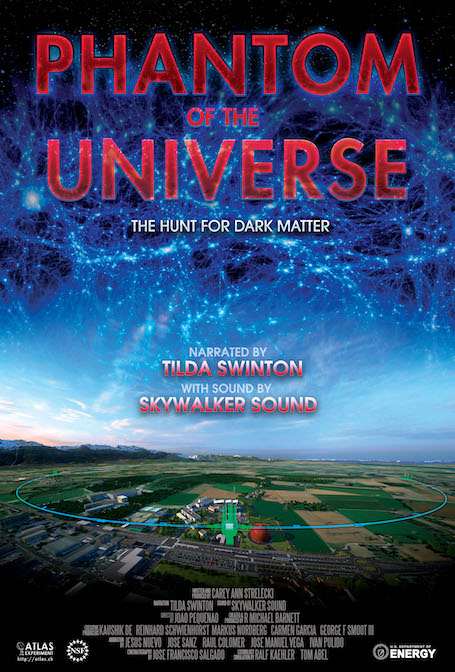
Phantom of the Universe
(7th through 12th grade)
The show reveals the first hints of its existence through the eyes of Fritz Zwicky, the scientist who coined the term “dark matter.” It describes the astral choreography witnessed by Vera Rubin in the Andromeda galaxy and then plummets deep underground to see the most sensitive dark matter detector on Earth, housed in a former gold mine. From there, it journeys across space and time to the Large Hadron Collider at CERN, speeding alongside particles before they collide in visually stunning explosions of light and sound, while learning how scientists around the world are collaborating to track down the constituents of dark matter. Phantom of the Universe is a good program to teach 10th-12th grade students about dark matter.
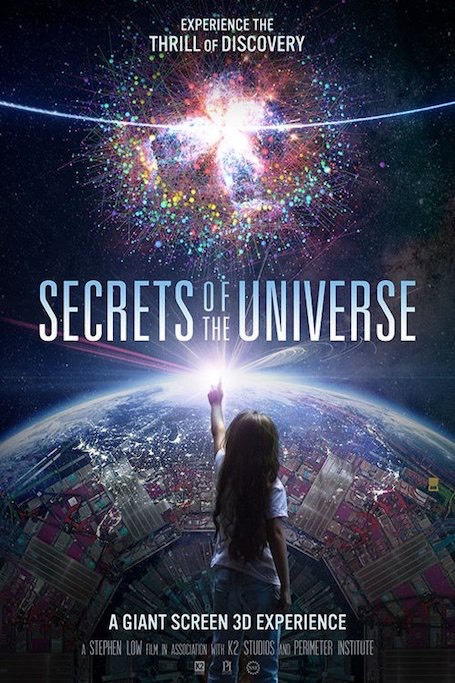
Secrets of the Universe
(7th through 12th grade)
Secrets of the Universe is a sweeping science adventure that immerses audiences in the greatest mysteries of our time – puzzles spanning from the infinitesimal to the infinite; a journey guided by some of the most brilliant minds, seeking to answer life’s greatest questions, using the greatest science machines in history. The answers await at the collision points of intellect and imagination, of theory and experiment, of the tiniest particles and most powerful forces in the Universe.
A comprehensive age-appropriate educators resource guide and extensive interactive website have been developed, and can be found at www.secretsoftheuniversefilm.com.
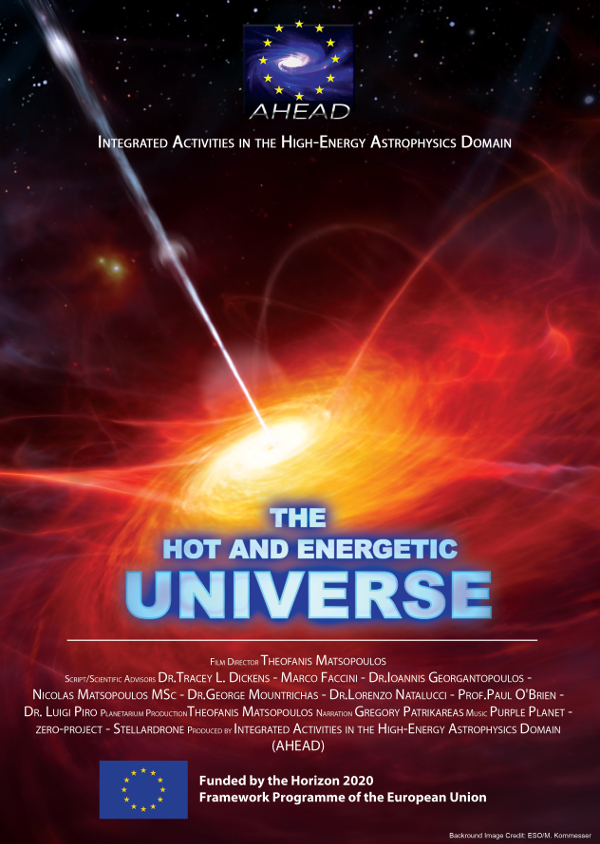
The Hot and Energetic Universe
(9th through 12th grade)
The Hot and Energetic Universe presents the basic principles electromagnetic radiation and the natural phenomena related to the High Energy Astrophysics. High Energy Astrophysics plays a key role in understanding the universe. These radiations reveal the processes in the hot and violent Universe. This science also probes hot gas in clusters of galaxies, which are the most massive objects in the Universe. It also probes hot gas accreting around supermassive black holes in the centers of galaxies. Finally, high energy radiation provides important information about our own Galaxy, neutron stars, supernova remnants and stars like our Sun which emit copious amounts of high energy radiation.
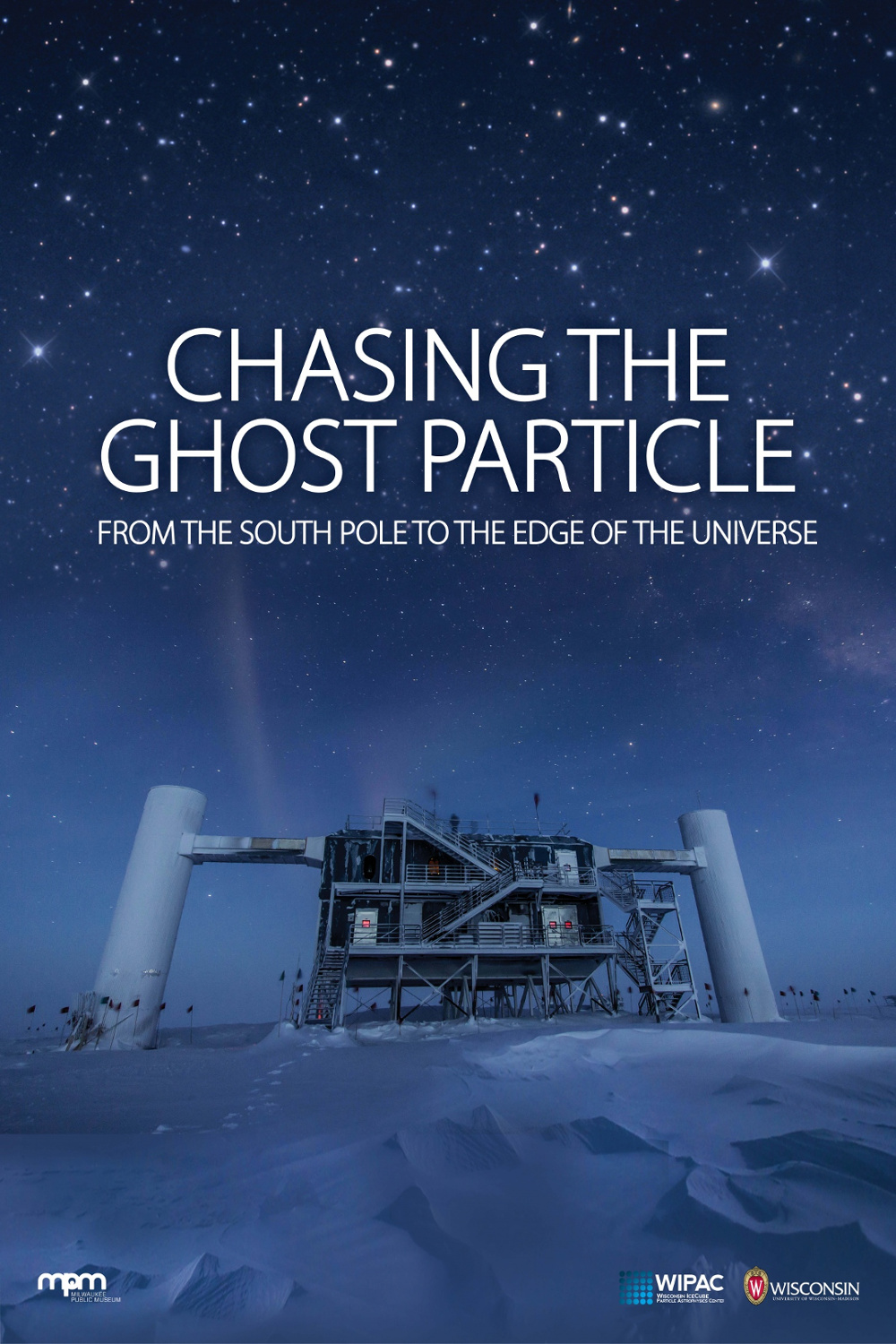
Ghost Particle
(10th through 12th grade)
Deep in the ice at the heart of Antarctica, IceCube, the biggest and strangest detector in the world waits for mysterious messengers from the cosmos. Scientists are using tiny and elusive particles called neutrinos to explore the most extreme places in the universe. These ghostly neutrinos give us an exclusive way to study powerful cosmic engines like exploding stars and black holes.
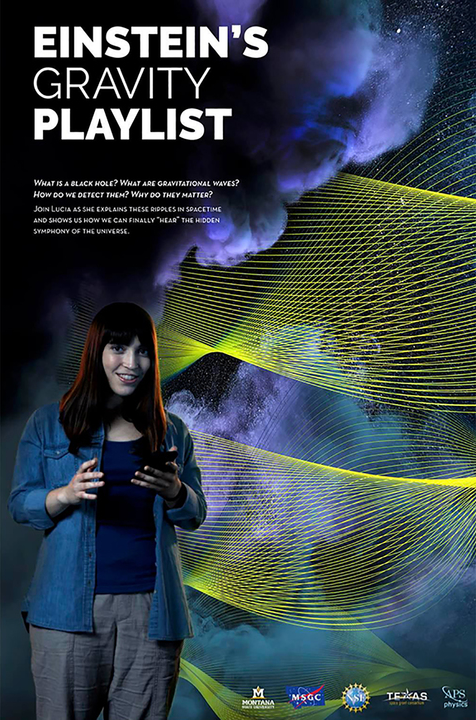
Einstein's Gravity Playlist
(10th through 12th grade)
Einstein’s Gravity Playlist explores the ripples in space-time known as gravitational waves. Albert Einstein predicted the existence of gravitational waves in 1916. A century later, scientists detected these waves using precise laser devices here on Earth. Join Lucia, a PhD student in physics, on an exploration of how gravitational waves are formed, how they move through the universe, and how scientists like her work to hear them.
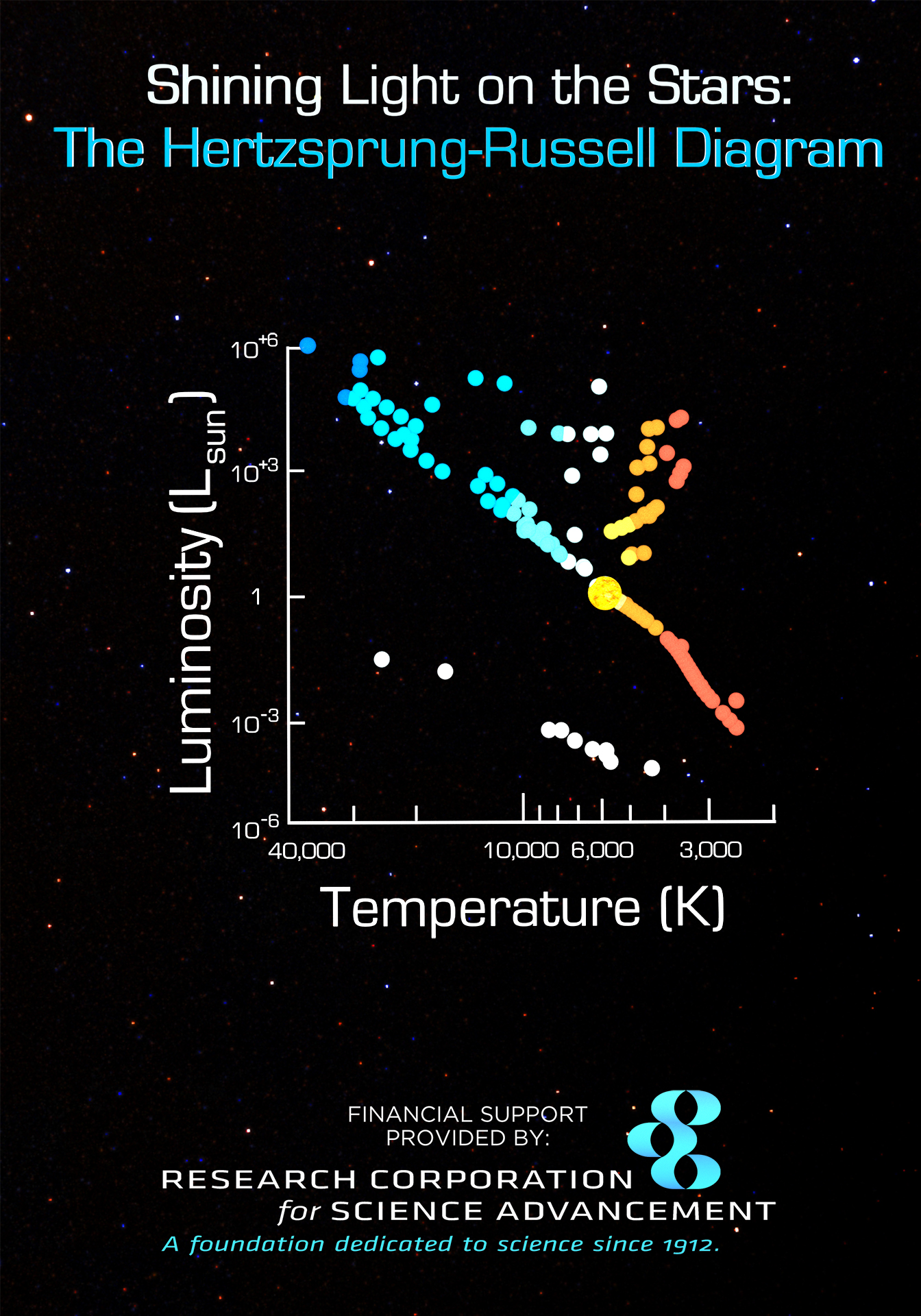
Shinning Light on the STARS: The Hertzsprung-RUssell DIAGRAM
(12th grade +)
Produced by the University of Toledo Fulldome Studio, this program examines the Hertzprung-Russell Diagram, one of the most important tools astronomers have in modelling the life-cycles of the stars. We examine nearby stars in our solar neighborhood and see where they lay on the diagram and what that tells us about our place in space.
Classic Programs
Looking for Journey through the Solar System?
Journey Through the Solar System was our classic live solar system program from 1988 through 2011. While we’ve retired the title, we still offer the same content in a new, more exciting format. For younger students we suggest the Zula Patrol and for older students Oasis in Space. Whichever program you choose, it will be augment with a substantial live section. Just request the Journey Through the Solar System package!


